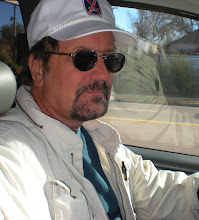

Everyone has told me that Newt was a great and generous man. There are plans for a small memorial to him next month. I'll keep you posted. Here is an obit from the L.A. Times.
Newt Heisley, a commercial artist who designed the Vietnam-era POW/MIA flag that came to symbolize the nation's concern for military personnel missing or held prisoner in modern conflicts, has died. He was 88.
Heisley, who was a World War II pilot, died Thursday at his home in Colorado Springs, Colo., after years of failing health, said Jim Heisley, one of his two sons.
In 1971, Heisley was a graphic designer for a New Jersey advertising agency when he sketched the stark black-and-white images at the center of the flag -- the silhouette of a man with head bowed, a guard tower and a strand of barbed wire -- and the words "You Are Not Forgotten."
His client was Annin & Co., a major flag manufacturer that had been commissioned by the wife of a soldier missing in action. She had recognized the need for a symbol to represent the National League of Families of American Prisoners and Missing in Southeast Asia.
"It was intended for a small group. . . . No one realized it was going to get national attention," Heisley said in 1997 in the Colorado Springs Gazette.
The flag emblazoned with POW/MIA first flew over the White House in 1988. It was installed in 1989 in the U.S. Capitol Rotunda and is on permanent display.
In 1990, Congress adopted the flag as "the symbol of our nation's concern" for those missing and unaccounted for during U.S. military action in Southeast Asia.
Congress later mandated that the flag be flown at federal buildings and military installations six days a year, including Memorial Day and the Fourth of July.
The flag's popularity has expanded more quickly than any other during the last 50 years, said Edward Mooney Jr., a flag expert and author in Palmdale.
To veterans organizations, the design has come to represent all U.S. troops missing in military conflicts dating to World War II.
The words that Heisley stretched across the bottom of the flag -- "You Are Not Forgotten" -- were inspired by his acute memories of piloting transport planes on long flights across the South Pacific during World War II.
While flying, he thought about "being taken prisoner and being . . . forgotten," he said in the 2002 book "Faith Under Fire." As he worked on flag sketches, "that experience came back to me, and I wrote down the phrase 'You are not forgotten.' "
The model for the captured soldier was his son Jeffrey, then 24, who had just returned from Marine training gaunt and sick with hepatitis.
While Heisley was "extremely, extremely proud" of designing the flag, he was embarrassed by the attention that came with it, said his son Jim.
"I didn't do it for personal gain or acclaim," Heisley told the Denver Post in 2002. "I did it for the men who were prisoners of war or missing in action. They're the real heroes."
Newton Foust Heisley was born Nov. 9, 1920, in Williamsport, Pa. His mother died when he was 4 months old, and he spent much of his childhood with grandparents.
At Syracuse University, he earned a degree in fine arts and met his future wife.
After graduating in the early 1940s, he was a graphic artist for the Pittsburgh Post-Gazette and then enlisted in the Army Air Forces.
After the war, he spent 25 years at advertising agencies in New York City and New Jersey. Tiring of the big-city commute, he drove west with his wife, Bunny, looking for "greener pastures," said his son Jim.
"They pulled into Colorado Springs in the middle of the night. The next morning, he saw the view and said, 'Bunny, we're not going any further. This is it,' " his son recalled.
After moving to the town in 1972, Heisley opened an advertising agency with Jim. One of their projects was designing a pin for the 1980 Lake Placid Winter Olympics.
When Heisley retired in 1987, he rediscovered fine art, painting a Pawnee Indian chief and a scene from "Madame Butterfly," a favorite opera of his wife. Bunny died in 2005 at 84.
On smaller canvases -- his lapel, hat and license-plate frame -- Heisley showcased the POW/MIA image whose popularity, he once said, had gone beyond his "wildest dream."
In addition to his sons, Heisley is survived by his fiancee, Donna Allison, whom he had planned to marry Friday; a sister, Patricia Freshney; and a granddaughter.

1 comment:
A very nice tribute to him Mr. Randall. Well done!
Post a Comment